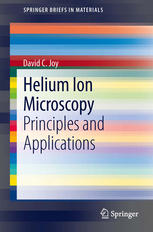

Most ebook files are in PDF format, so you can easily read them using various software such as Foxit Reader or directly on the Google Chrome browser.
Some ebook files are released by publishers in other formats such as .awz, .mobi, .epub, .fb2, etc. You may need to install specific software to read these formats on mobile/PC, such as Calibre.
Please read the tutorial at this link: https://ebookbell.com/faq
We offer FREE conversion to the popular formats you request; however, this may take some time. Therefore, right after payment, please email us, and we will try to provide the service as quickly as possible.
For some exceptional file formats or broken links (if any), please refrain from opening any disputes. Instead, email us first, and we will try to assist within a maximum of 6 hours.
EbookBell Team

5.0
30 reviewsHelium Ion Microscopy: Principles and Applications describes the theory and discusses the practical details of why scanning microscopes using beams of light ions – such as the Helium Ion Microscope (HIM) – are destined to become the imaging tools of choice for the 21st century. Topics covered include the principles, operation, and performance of the Gaseous Field Ion Source (GFIS), and a comparison of the optics of ion and electron beam microscopes including their operating conditions, resolution, and signal-to-noise performance. The physical principles of Ion-Induced Secondary Electron (iSE) generation by ions are discussed, and an extensive database of iSE yields for many elements and compounds as a function of incident ion species and its energy is included. Beam damage and charging are frequently outcomes of ion beam irradiation, and techniques to minimize such problems are presented. In addition to imaging, ions beams can be used for the controlled deposition, or removal, of selected materials with nanometer precision. The techniques and conditions required for nanofabrication are discussed and demonstrated. Finally, the problem of performing chemical microanalysis with ion beams is considered. Low energy ions cannot generate X-ray emissions, so alternative techniques such as Rutherford Backscatter Imaging (RBI) or Secondary Ion Mass Spectrometry (SIMS) are examined.